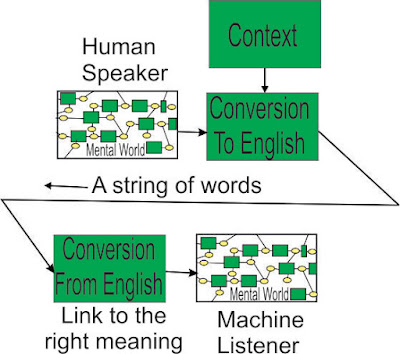A Technical Paper Preprint
Abstract
This article describes the transition of an undirected active network, used for numerical and logical analysis, and made up of communicating operators and nodes, and being self-extensible, into a network of semantic structures, and the extensions necessary to handle language. The network, called Active Structure, was infused with knowledge in the form of tens of thousands of definitions taken from a human-readable dictionary. Where the dictionary fell short, from circularity, lack of a hierarchical form for its senses and sub senses, or inadequate detail around verbs, the entries were extensively curated. The result is a machine which has access to every meaning of every word in its vocabulary, and needs to manage the right meaning for every use of a word, a task that our unconscious minds now handle. To demonstrate that such a network can aspire to human-level tasks, we have begun loading an Anti-Money Laundering Act so that the machine can devise and test strategies against money launderers. There is a higher goal being aimed at, the breaking of the Four Pieces Limit. That is, the network is not intended to save money on human cognitive labor, but to raise an absurdly low limit on it.
Keywords
semantic structure; human-readable dictionary; undirected active network; self-extensible; dictionary curation; four pieces limit; anti-money laundering
https://www.preprints.org/manuscript/202211.0573/v1


Comments
Post a Comment